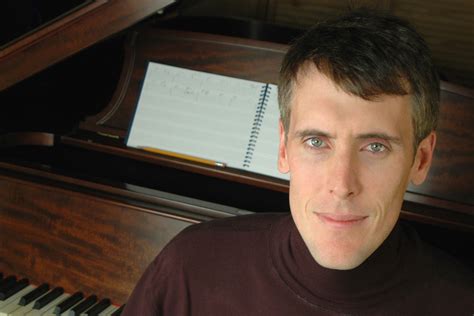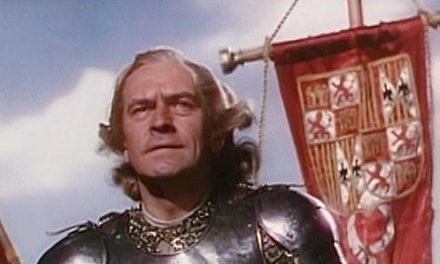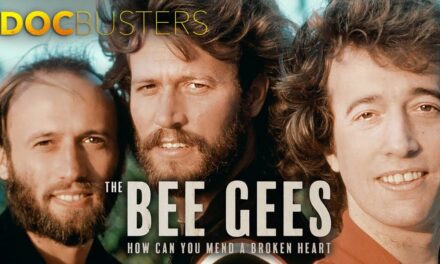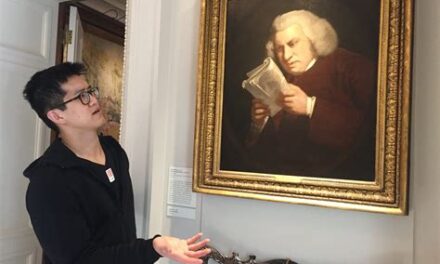Some years ago, while visiting Los Angeles, I met a charming young man named Stephen Edwards. He told me he was a composer, and given our common love of music, and golf, we stayed in touch. As the years passed, I watched as Steve became one of Hollywood’s highly prized film composers, amassing over 60 film scores in all movie genres.
In the midst of his burgeoning career, Steve, a devout Catholic, mentioned to me that he had been composing sacred music, which led to an interview on my radio show, “Church and Culture,” where we played and discussed a number of his compositions in different genres. Towards the end of the show, Steve mentioned that he was writing a Requiem for his mother who had recently died of cancer. (I had met Steve’s parents at our first meeting, and I recalled the strong bond between them at the time.) The way he talked about his Requiem I knew this was going to be something special, and I was right.
The “Requiem for My Mother” is quite beautiful, radiant in many places, majestic and fiercely resolute in others, a remarkable tribute to his mother, Rosalie, as well as to all mothers. The recording will be made available on May 12, but a documentary of the same name, about its composition, premiere performance, and recording, will be aired nationwide on over 200 public television stations. (Watch the trailer below.)
As beautiful as the Requiem is, the documentary does much more than only showcase the music. “The Requiem for My Mother” contains two dramatic story lines. First, Edward’s composition became the occasion for a remarkable collaboration of amateur and professional performers, all working under the pressure of performing in St. Peter’s Basilica with only one rehearsal. Dr. Candace Wicke, the remarkable conductor, enabled several amateur church choirs to perform at a level I am sure they never imagined possible. Her powerful personality lights up of the documentary and clearly helped to ignite both the recording and the live performance.
At a deeper level, the Requiem, which the documentary reveals, brought solace not only to the twenty Edwards family members in attendance but also to the father of the conductor, Jesse Petersen, himself a recording producer. In the course of the documentary, we find out that he had lost his son, Candace’s brother, to cancer four years earlier. Yes, we see his tears and hear his grieving, but he puts something into words that best describe the impact of Edward’s Requiem: “There is a form that even in loss that gives a sense of reason for being.” In one sentence, Jesse Petersen has expressed how music can bring healing, can revivify, those who suffer.
Music recognizes death and in doing so expresses the reason to not only to keep living but also to live with joy.
This also is surely the reason why Dr. Wicke literally commands the chorus sing with all the emotion the words require. Dies Irae — Days of Wrath — she exhorts the singers should sound just like that, “the world will be turned to ashes.” As the camera pans the faces of the chorus expressions change suddenly, a greater focus, more seriousness, even a touch of (appropriate) fear. Let me say here, by the way, that after watching Candace Wicke conduct, I would never want to be the recipient of her right jab!
But at the heart of the documentary is the shared love between Steve and his mother, Rosalie. We see Rosalie as a young woman, a stunner, the daughter of Sicilian immigrants; as a wife and mother to four children, playing her flute, teaching youthful Steve at the piano; as a choral conductor and community, still beautiful, with an ever-radiant smile.
After seeing this documentary and hearing this music, you will wish, as I did, that you had known Rosalie Edwards. You will also have witnessed the unfiltered expression of a son’s love for his mother, reinforced by his brother Jim recalling that during the Vatican performance when the flute began to play he looked and saw Rosalie, She was there. . . . I was seeing Mom right there.”
The opening Requiem aeternum is masterful, with the statement of an attractive and memorable main theme and developed as the foundation for the work as a whole. Using the children’s treble chorus to state the theme was one of the composer’s first ideas about the piece, and the flute solo following is Steve paying tribute to his mother Rosalie who was an excellent flutist, as well as a choral conductor and pianist. I can’t imagine anyone hearing this movement and not wanting to the hear the rest.
The best comparison I can make is the first time I heard Maurice Durufle’s Requiem (1947). Yes, it’s that good.
The first movement may raise the expectation of a simple, straightforward melodically based choral tribute, but that expectation is quickly quashed by the musical variation that follows. Each movement arises from the meaning of the liturgical texts. As Edwards wrote in his program notes:
” My method was to sit with the text and let the Ancient Latin syllables lead me to the appropriate sounds I heard in my head to accompany the text. Then all I had to do was write what I heard.”
The Kyrie is probably the most familiar language of Requiem Mass. It begins with agitated strings followed by percussion and male voices chanting with a kind of dark intent When the ladies voice arrive much of the tension is lifted: their Christie eleison is less demanding and more pleading. But the forward-moving returns with the trebles breaking through and the whole ends in a cappella. Edwards, in his program notes, calls this movement “pleading and angry,” which I would expand to a contrast between the anxiety of the male voices, the anger of the women, and the attempt of the children to mediate between the two.
The Dies Irae gave Edwards his biggest problem in composing. Evidently, he was in such awe of the great settings by Mozart and Verdi that he had to overcome intimidation before the music suddenly came to him, his “Eureka” moment “when the odd-meter (3/4-3/4-4/4) theme dawned on me while sitting at the piano one day.”. Its arrival may have had something to do with Dr. Wicke’s obvious impatience with the lateness of the score.
Based upon the familiar chant theme, the Dies Irae is agitated and demanding, while making clear “wrath,” taken alone, is far from beautiful. As the composer said in the documentary, he “was going to leave nothing to the imagination.”
The excellence of the Prague Symphony Orchestra, well-known throughout the film world for its countless soundtrack recordings plays brilliantly in this movement, with the strings, winds, brass, and percussion showing their stuff in playing the odd meter and very intricate scales.
The Offertory does not return to simple melodic statement but begins with an uncertain sound in the opening, “free the souls . . . from internal punishment.” But the mood turns supplicatory, as Edwards puts it, “the women take the role of asking what the men won’t ask for (“but may…St. Michael lead them into the Holy Light”) – then the men realize that this request is reasonable and correct one – and join in and trade phrases until the end of the movement.”
The next three movements follow the texts closely: the Sanctus, sublime and glorious, is led by the trebles, joined by the adult choir, and then the orchestra. Pie Jesus, the first movement Edwards composed, is both reverent and at times majestic. Edwards calls it “the most tuneful movement of the entire work,” and considers the use of the treble chorus as the basic sound material out of which the entire work developed.
The chorus alone sings the Agnus Dei, which is fervent, pleading, then calmly prayerful. I wondered why there were such obvious pauses between some of the held notes, and then I read in Edward’s program notes, they “are symbolic pauses for prayer – and common tones for the singers to pick up the next phrase – and move on to another line of text.” Nice how the theological and musical can enhance one another!
The Communion, however, contains the biggest musical surprise in the piece with a jubilant, even jaunty, rhythm and an almost operatic descant over the children’s voices. Libera me is appropriately importunate and pleading, reminding us that Stephen Edwards is, after all, a Hollywood film composer, who knows how to use orchestral and choral climaxes to great effect. When the Dies Irae returns, it arrives with less fear, more assuredness, and leaves no question mark at the end.
With In Paradisum, the scene changes: the trebles sing a cappella, and we are in heaven, as signified by the harp and flute themes, the earlier agitated rhythm returns on the strings, but now it’s joyful, hopeful excitement, the soul is moving upward, the voices rise and rise, voices and orchestra meld and the french horn sounds (always a sign that majesty approaches), And finally the main theme returns on the women’s voices — repeating “in paradisum” — singing forte with the horns echoing the theme, we are climbing towards heaven and the gates are opening.
As Edwards describes it, “As the entire chorus sings ‘angelorum,’ they bring back the theme originally heard at the very beginning of the piece by the children singing ‘Requiem aeternam.'”
All the performers are strong, but the childrens chorus stands out since they are given many of the most emotionally powerful moments. The soloists are both excellent, and the baritone has a very secure high register. The chorus as a whole melds powerfully in complete unison, and when the ladies are forward they have very lovely sound. Yet, it is Candace Wicke who pulled these seemingly disparate forces together into a whole which does not betray, even for a moment, the pairing of amateurs with professionals. She is no doubt a “force of nature,” and I mean that entirely as a compliment.
Stephen Edwards has written a work that will be performed for many years to come. I predict his “Requiem for My Mother” will catch on quickly among those who know and love sacred music but find a much larger audience. What Edwards has composed will become contemporary Requiem of choice to those who seek beauty first.
—
Requiem for My Mother will be released on May 12 and can be purchased here through Amazon.














